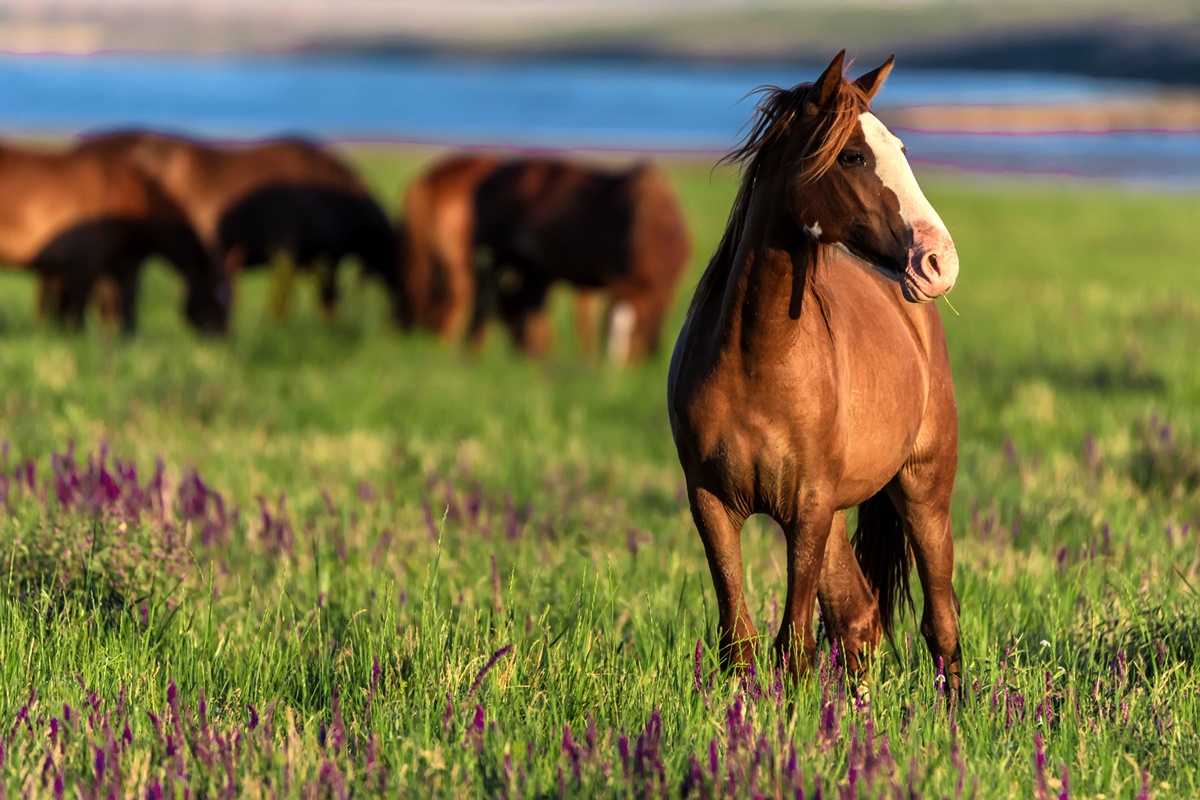
Der Mustang ist eine Pferderasse, die jeder kennt (nicht nur dank der Disney-Animation „Mustang of the Wild Valley“). Diese Pferde werden von nordamerikanischen Indianern eifrig benutzt. Das Wort Mustang leitet sich von den spanischen Wörtern mestengo (oder mesteño) und mostrenco ab, die der englische Lexikograph J. Minsheu 1599 mit „streunend“ übersetzte. Beide Wörter bezeichneten das Vieh als „wild, herrenlos“.
„Mustangers“ (spanisch für „mesteñeros“) waren Cowboys (Vaqueros), die Wildpferde fingen und zum Verkauf zunächst in Spanien und später in Nordamerika (Mexiko, Texas, Kalifornien) trieben).
Wilde Mustangs - Geschichte der Rasse
Mustangs stammen von Pferden ab, die im 16. Jahrhundert nach Nordamerika gebracht wurden. Die spanischen Konquistadoren nahmen sie mit, um die Neue Welt zu erobern. Die Pferde, die die Kämpfe mit den Indianern überlebten, entkamen wahrscheinlich oder wurden absichtlich in die Wildnis entlassen. Zu ihnen gesellten sich domestizierte Pferde, die aus ihren Gehegen entkamen. Wahrscheinlich kam es vor, dass wilde Hengste selbst Stuten entführten. Im Laufe der Zeit breiteten sie sich aus und fanden in den grasbewachsenen Prärien gute Lebensbedingungen. In der Wildnis alleine, wurden sie bald wieder wild.
Im Laufe der Jahre wuchs die Zahl wilder Mustang Herden, die sich nicht vor ihren natürlichen Feinden schützen mussten (aufgrund ihrer geringen Anzahl). Spanische Pferde und andere von den Konquistadoren mitgebrachte Rassen (einschließlich iberischer Pferde) wurden zu einer neuen Rasse kombiniert.
Diese Herden waren die Pferde-Quelle für Indianer und Cowboys. Wilde Mustangs wurden aufgrund ihrer geringen Anschaffungskosten und ihrer unglaublichen Ausdauer gerne gefangen. Es ist ein Pferd mit starken Beinen, das bereit für lange Reisen ist.
Bald begann in Nordamerika die Präriekultivierung und die Zahl der Viehzüchter nahm zu. Riesige Ranches wurden geschaffen, die viel schnellere und größere Pferde erforderten. In dieser Situation wurden Mustangs zu natürlichen Feinden und Nahrungskonkurrenten für Rinder. Man begann Mustangs zu töten, und Mitte des 20. Jahrhunderts waren nur noch wenige Individuen übrig.
Seit 1957 gibt es für diese Rasse ein Zuchtbuch. Die American Mustang Association kümmert sich um den Erhalt der Population.
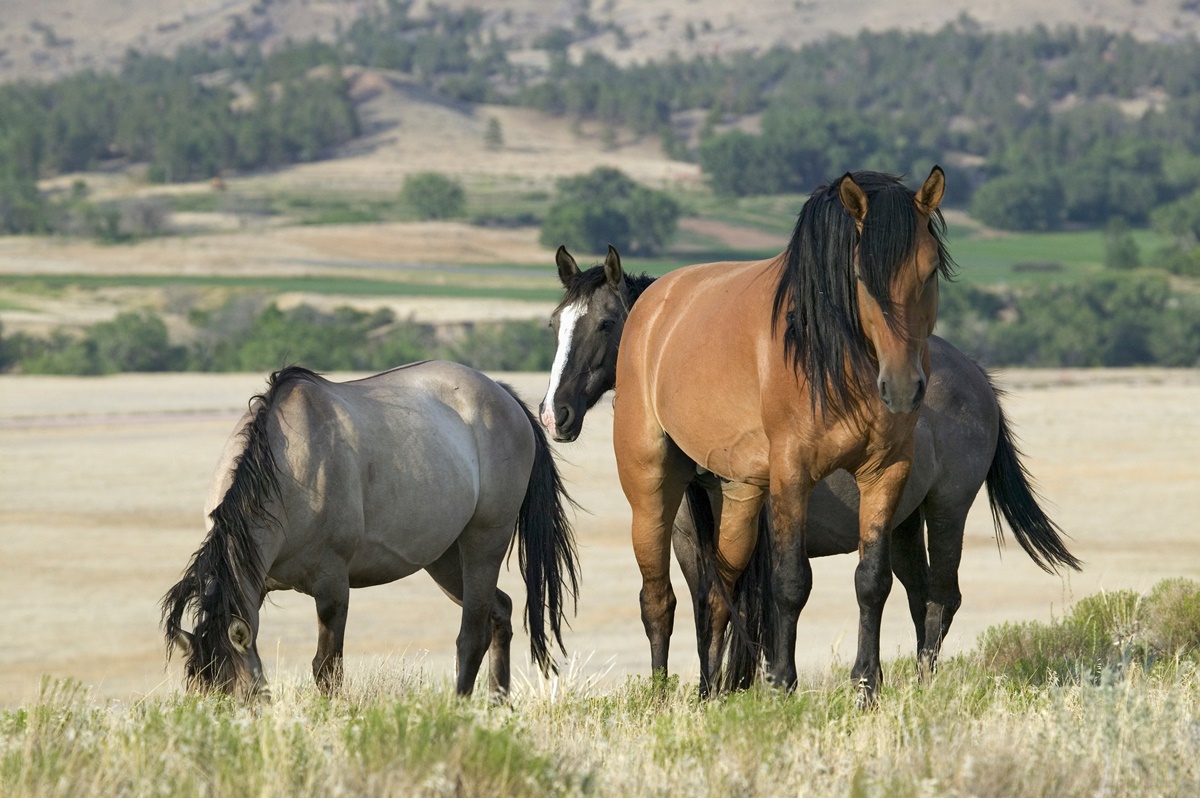
Heute lebende Mustangs
Mustangs tauchten im 16. Jahrhundert auf, aber erst 1971 erkannte der Kongress der Vereinigten Staaten an, dass „wilde, freilaufende Pferde und Esel lebende Symbole des historischen und pionierhaften Geistes des Westens sind“. Seitdem sind sie geschützt.
Heute sind die überlebenden Herden diejenigen, die auf mehrere Reservate in Wyoming, Kalifornien und Kansas beschränkt sind, wo sie aufgezogen werden, und andere Herden, die ohne menschliches Eingreifen leben (Nevada, Kalifornien, Oregon, Utah, Montana und Wyoming). Die Verwaltung der Bestände ist dem US Bureau of Land Management (BLM - Federal Office of Land Development) anvertraut. Seine Aufgabe ist es, diese Pferde zu beschützen und die Population zu beaufsichtigen.
Es wird geschätzt, dass die Population wilder Mustangs im August 2017 auf 72000 und im Jahr 2019 auf über 88000 Stück Pferde gestiegen ist. Auf den vorher erwähnten Farmen gibt es weitere 45000 Tiere. Eine schnell wachsende Population ist eine große Herausforderung, zumal die Zahl der Tiere das verfügbare Futter bald übersteigen kann. Der Grund sind in erster Linie die wenigen natürlichen Feinde dieser Tiere (Wölfe waren historisch gesehen selten und bewohnen diese Gebiete heutzutage nicht). Ihre Anzahl wird durch die oben genannte BLM geregelt.
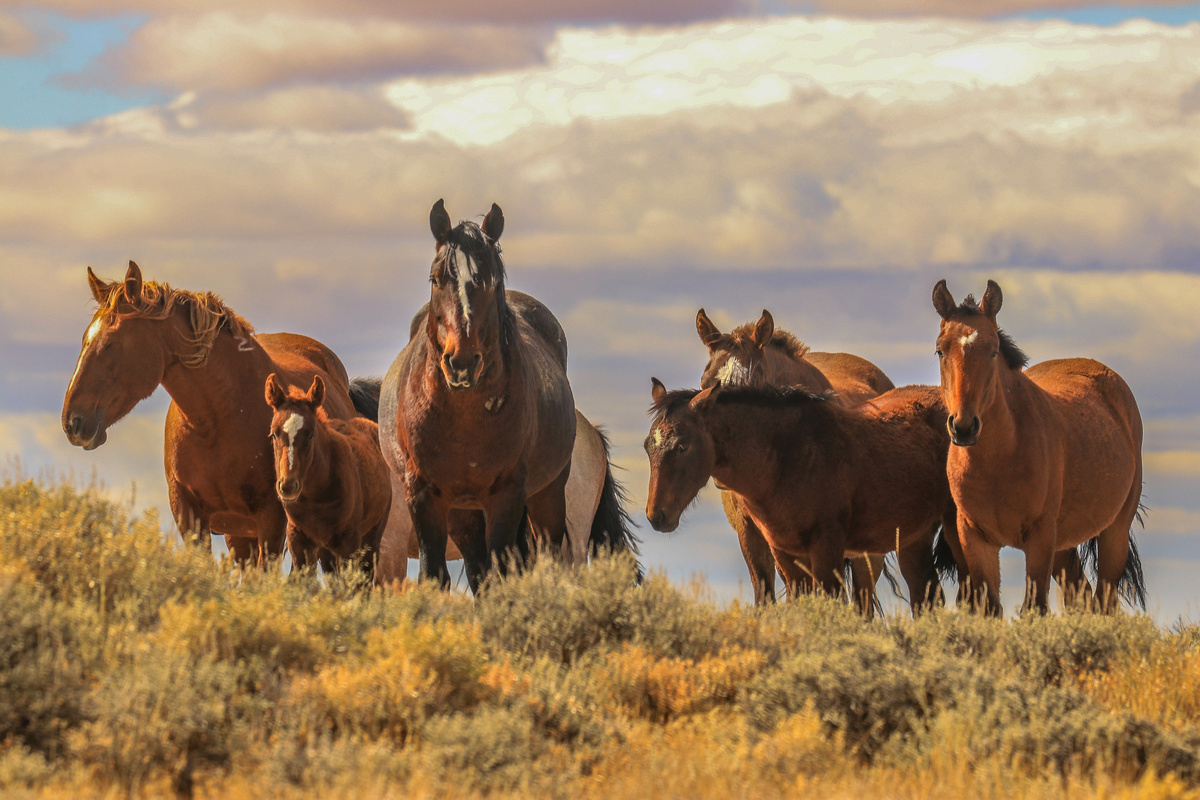
Die am häufigsten verwendete Methode ist das Fangen von Überpopulation. Leider gibt es keine konkreten Richtlinien, wie ein solcher Prozess durchzuführen ist. Die meisten Methoden sind für die Tiere ziemlich anstrengend und sogar tödlich.
Um Mustangs zu fangen, werden Lastwagen, Quads, Hubschrauber und Schusswaffen verwendet, um Pferde in Gehege oder "Fallen" zu jagen. Diese Techniken führen bei Pferden oft zu extremer Erschöpfung, schweren Verletzungen und sogar zum Tod. "Köder"-Fallen sind eine weitere übliche Art, Mustangs zu fangen, wobei Heu oder Wasser normalerweise in einem getarnten Gehege zurückgelassen werden, während verschiedene Arten von Auslösesystemen die Tore hinter den Pferden schließen. Eine andere, weniger zerstörerische Methode verwendet ein gezähmtes Pferd das sog. "Judaspferd", das darauf trainiert wurde, wilde Tiere zum Gehege zu führen.
Gefangene Mustangs werden Privatpersonen zur Adoption angeboten - ein Jahr nach der Adoption kann man ein Eigentumsrecht für das Pferd beantragen. Leider ist die Zahl der Adoptionen zu gering. Zuvor war sie nur für eine Gebühr von 125 US-Dollar erhältlich, aber seit März 2019 bieten die USA 1000 US-Dollar für die Adoption an. Pferde, die nicht adoptiert werden, gehen an Farmen, wo befürchtet wird, dass sie zur Schlachtung verkauft werden.
Mustang-Pferd - Aufbau
Die charakteristische Figur des Mustangs besteht aus einem großen, ramsnasigen Kopf auf einem Hirschhals, einem kompakten Körper, einer verkürzten Kruppe und kräftigen, stämmigen Beinen. Diese Tiere zeichnen sich durch starke Hufe und kräftigere Zähne aus.
Derzeitig können wir zwei Linien von Mustangs antreffen:
- von edlerem Körperbau mit der Schönheit eines spanischen Pferdes
- von einem primitiveren Körperbau, der eher Berber-Pferden ähnelt
Widerristhöhe: 135-150 cm
Farben: Es gibt sie praktisch in allen Farben und Varianten
Die durchschnittliche Lebensdauer eines Mustangs beträgt etwa 20 Jahre.
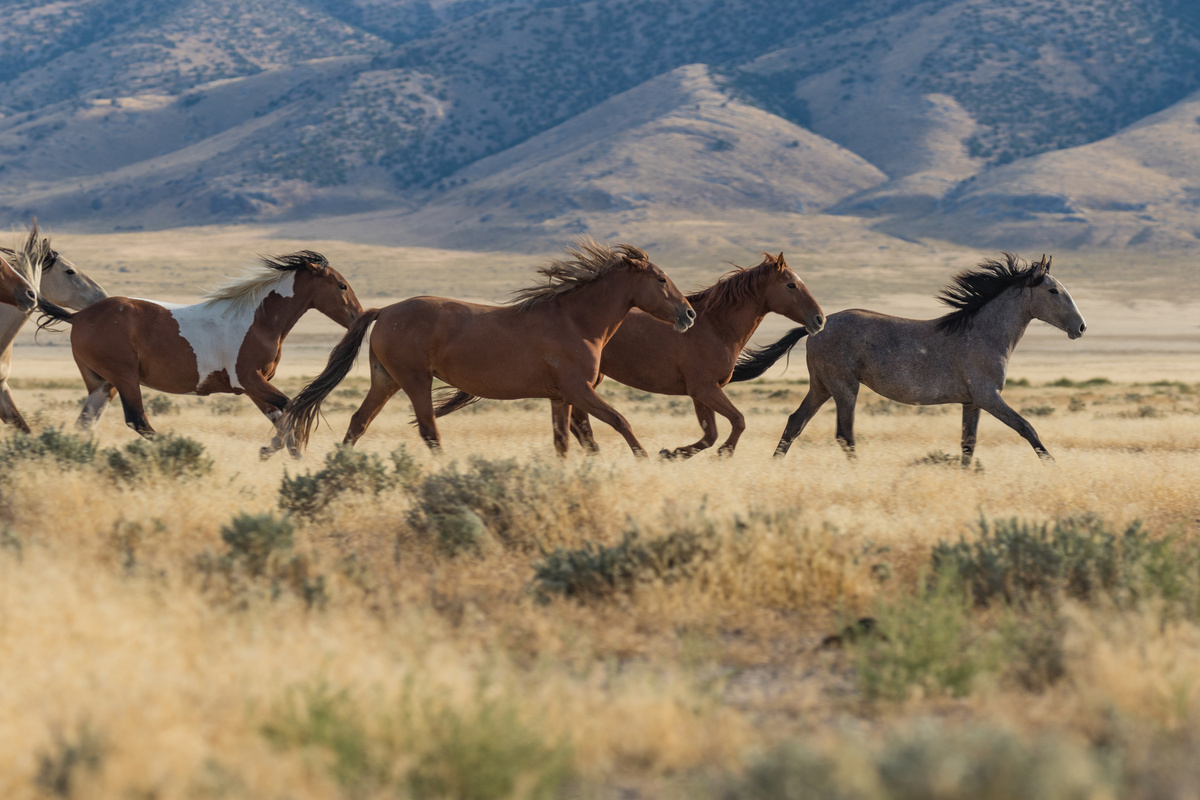
Mustang - Wildpferd
Ernährung
Mustangs ernähren sich nur von Pflanzen – Gras, Kräutern, Samen und Blättern. Diese Tiere tragen zur Ausbreitung der Pflanzen bei (nicht gesetzte Samen werden mit dem Kot ausgeschieden). Sie leben in der amerikanischen Prärie und haben sich an schwierige Bedingungen angepasst – sie finden schneller Nahrung und Wasser (selbst in gefrorenen Eislöchern).
Herdenleben
Eine Herde ist normalerweise eine kleine Herde, die aus einem erwachsenen Hengst und mehreren oder einem Dutzend Stuten und Fohlen besteht. Normalerweise bringt eine Stute ein Fohlen zur Welt. Sie haben ihr eigenes Territorium, in dem sie sich bewegen. Mustangs tolerieren auch andere Herden, deren Territorien an ihre Grenzen. In einer kleinen Herde bewegen sie sich schneller und finden leichter Nahrung. Jede Herde hat ihre Leitstute, die die Herde bei Gefahr an einen sicheren Ort bringt. Der Hengst bleibt und stellt sich der Gefahr.
Ein erwachsener Hengst (ca. 3 Jahre alt) muss die Herde verlassen, um eine eigene zu gründen. Dies ist der Moment, in dem er mit anderen Hengsten um Stuten kämpft.
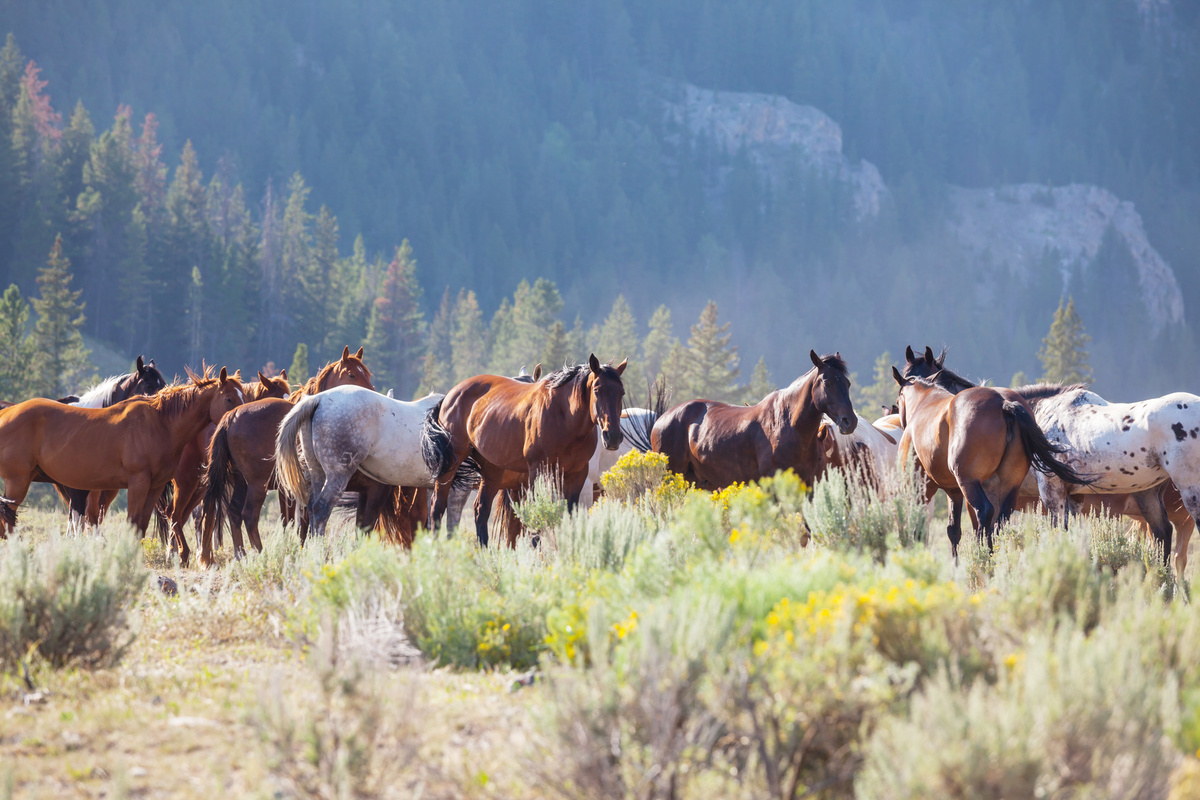
Mustangs - Einsatzbereich
Heutzutage wird ein Mustang, richtig trainiert und gepflegt, zu einem erstaunlichen Pferd. Ein solches Pferd zeichnet sich in Disziplinen wie Reining, Fassrennen, Sportpferderennen und sogar Springreiten aus.
Machen Sie sich mit alle Pferderassen bekannt
Der Mustang ist nur eine von vielen Rassen. Lernen Sie andere Pferderassen kennen, über die wir bereits geschrieben haben:













